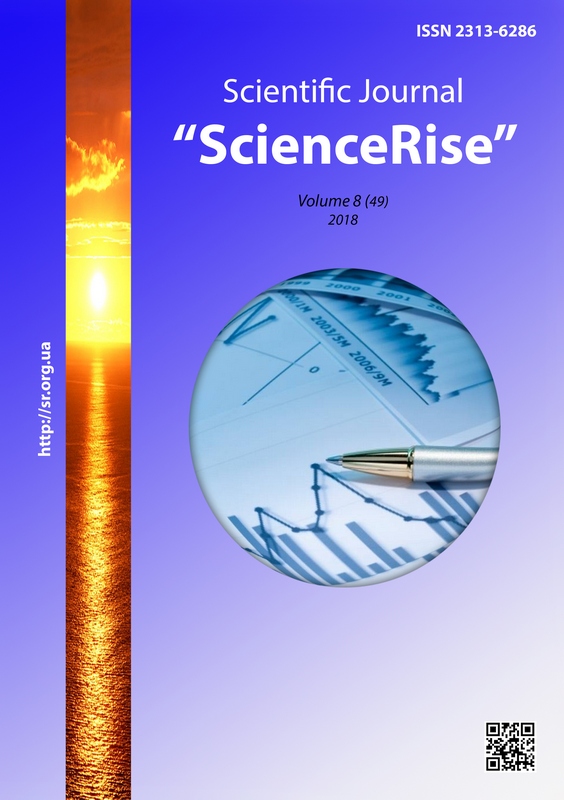Fireproof polymer materials based on olefin copolymers. Regulation of physical-mechanical characteristics
DOI:
https://doi.org/10.15587/2313-8416.2018.141413Keywords:
modifier, ethylene-vinyl acetate copolymer, fire-retardant fillers, physical and mechanical characteristics, oxygen indexAbstract
Determination of the influence of the modifier on the physical and mechanical properties of fireproof materials based on olefinic polymers for the cable industry. Investigation of the physical and mechanical properties of polymer compositions was carried out on a tensile machine. The effect of the amount of a modifier on the increase in the physical and mechanical properties of EVA polymer compositions was studied. These characteristics are retained by more than 80 % after aging for all test samples. The effectiveness of directed regulation of the physical and mechanical properties of fireproof EVA compositions by a structural modifier is shown. The results of the studies make it possible to quickly adjust the formulation of the compositions
References
Peshkov, I. B. (2013). Materialy kabel'nogo proizvodstva. Moscow: Mashinostroenie, 456.
Tirelli, D. (2013). Antipireny dlya kompozitov. The Chemical Journal, 1-2, 42–45.
Obzor mineral'nyh antipirenov-gidroksidov dlya bezgalogennyh kabel'nyh kompoziciy (2009). Kabel'-news, 8, 41–43.
Bezgalogennye ogneupornye kabeli. Available at: http://www.amtenergo.ru/statji/ognestoikie-kabeli.html
Lujan-Acosta, R., Sánchez-Valdes, S., Ramírez-Vargas, E., Ramos-DeValle, L. F., Espinoza-Martinez, A. B., Rodriguez-Fernandez, O. S. et. al. (2014). Effect of Amino alcohol functionalized polyethylene as compatibilizer for LDPE/EVA/clay/flame-retardant nanocomposites. Materials Chemistry and Physics, 146(3), 437–445. doi: https://doi.org/10.1016/j.matchemphys.2014.03.050
Sonnier, R., Viretto, A., Dumazert, L., Longerey, M., Buonomo, S., Gallard, B. et. al. (2016). Fire retardant benefits of combining aluminum hydroxide and silica in ethylene-vinyl acetate copolymer (EVA). Polymer Degradation and Stability, 128, 228–236.doi: https://doi.org/10.1016/j.polymdegradstab.2016.03.030
Jeencham, R., Suppakarn, N., Jarukumjorn, K. (2014). Effect of flame retardants on flame retardant, mechanical, and thermal properties of sisal fiber/polypropylene composites. Composites Part B: Engineering, 56, 249–253. doi: https://doi.org/10.1016/j.compositesb.2013.08.012
Yen, Y.-Y., Wang, H.-T., Guo, W.-J. (2012). Synergistic flame retardant effect of metal hydroxide and nanoclay in EVA composites. Polymer Degradation and Stability, 97 (6), 863–869. doi: https://doi.org/10.1016/j.polymdegradstab.2012.03.043
Feng, C., Liang, M., Chen, W., Huang, J., Liu, H. (2015). Flame retardancy and thermal degradation of intumescent flame retardant EVA composite with efficient charring agent. Journal of Analytical and Applied Pyrolysis, 113, 266–273. doi: https://doi.org/10.1016/j.jaap.2015.01.021
Shevchenko, V. G. (2010). Osnovy fiziki polimernyh kompozicionnyh materialov. Moscow: MGU im. Lomonosova, 98.
Makarova, N. V., Trofimec, V. Ya. (2002). Statistika v Excel. Moscow: Finansy i statistika, 368.
Muhin, N. M., Buryndin, V. G. (2011). Opredelenie reologicheskih i fiziko-mekhanicheskih svoystv polimernyh materialov. Ekarenburg: UGLTU, 33.
Bobovich, B. B. (2009). Nemetallicheskie konstrukcionnye materialy. Moscow: MGIU, 384.
Downloads
Published
Issue
Section
License
Copyright (c) 2018 Olena Chulieieva, Volodymyr Zolotaryov

This work is licensed under a Creative Commons Attribution 4.0 International License.
Our journal abides by the Creative Commons CC BY copyright rights and permissions for open access journals.
Authors, who are published in this journal, agree to the following conditions:
1. The authors reserve the right to authorship of the work and pass the first publication right of this work to the journal under the terms of a Creative Commons CC BY, which allows others to freely distribute the published research with the obligatory reference to the authors of the original work and the first publication of the work in this journal.
2. The authors have the right to conclude separate supplement agreements that relate to non-exclusive work distribution in the form in which it has been published by the journal (for example, to upload the work to the online storage of the journal or publish it as part of a monograph), provided that the reference to the first publication of the work in this journal is included.

